A compact and walkable city of jaw-dropping beauty, Budapest has been the seat of the Kings of Hungary, a centre for Renaissance humanism and the co-capital of an empire.
Made up of three separate cities, Buda, Óbuda and Pest, that were unified in 1873, Budapest has experienced more than its share of catastrophe and prestige.
Many of the marvellous sights on this list cropped up at the turn of the 20th century, when Austro-Hungarian kings were crowned in the city.
At this time Hungary was celebrating 1,000 years of existence and talented artists and architects came together to collaborate on new monuments and restore old ones.
The dividing line between once separate settlements, the Danube helps set off many of Budapest’s most cherished spots, from the enormous Parliament Building to Margaret Island and Gellért Hill, resonating with centuries of history.
1. Széchenyi Chain Bridge
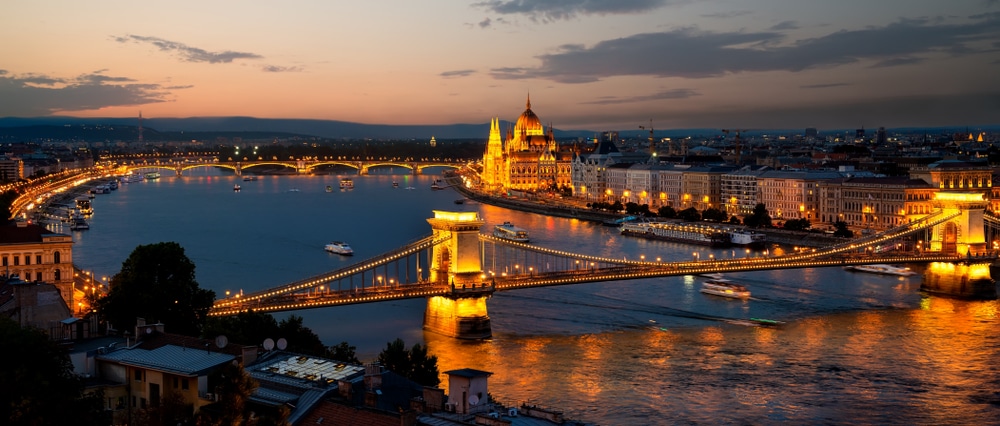 Source: givaga / shutterstock
Source: givaga / shutterstockWest and East, Buda and Pest, were linked for the first time with the opening of this emblematic suspension bridge in 1849 after ten years of work.
And as the first permanent crossing on the Danube, some 24 years before the independent cities merged, the Széchenyi Chain Bridge represents more than a piece of construction.
But in that respect it’s also important, as this 375-metre structure, built from stone and wrought iron, was an engineering marvel in its day.
The bridge is named for István Széchenyi, the politician who championed its construction and was built by Scottish engineer Adam Clark after a design by Englishman William Tierney Clark.
On the right bank Adam Clark also excavated the tunnel under Buda Castle Hill. This is exactly as long as the bridge, and a fun local tale is that the bridge can be pushed into the tunnel when it rains to stop it from getting wet.
2. Hungarian Parliament Building
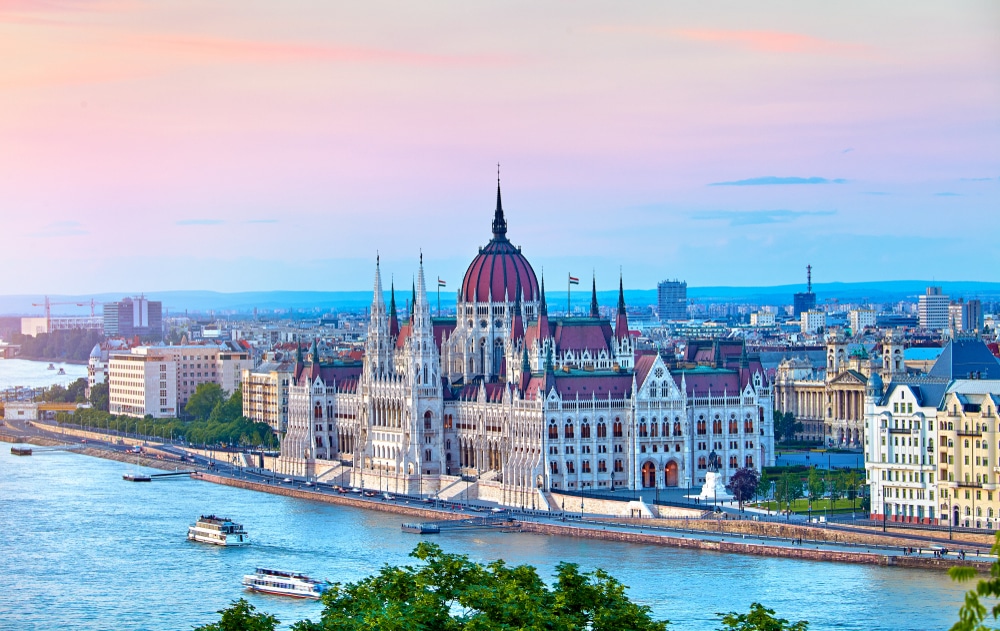 Source: Yasonya / shutterstock
Source: Yasonya / shutterstockThe seat of the National Assembly of Hungary is a giant but also elegant Gothic Revival building resting on the Pest bank of the Danube.
An intoxicating mass of white sculpture, arches, pinnacles, gables and towers, the Hungarian Parliament Building centres on a majestic Renaissance Revival dome, 96 metres tall, and a sparkling reference point for the city.
Inaugurated in 1904, the complex employed 100,000 people in its construction, and remains the largest building in Hungary.
The interior glows with gold leaf, 40 kg in fact, and sections are open to visitors. You’ll be wowed by the breathtaking Dome Hall, Chamber of Peers and Grand Stairway, as well as the Holy Crown of Hungary, which was moved to the central hall in 2000.
Appearing on the national coat of arms, this is adorned with 11th-century Byzantine enamel icons and used for the coronation of more than 50 kings up to Charles IV in 1916.
3. Great Market Hall
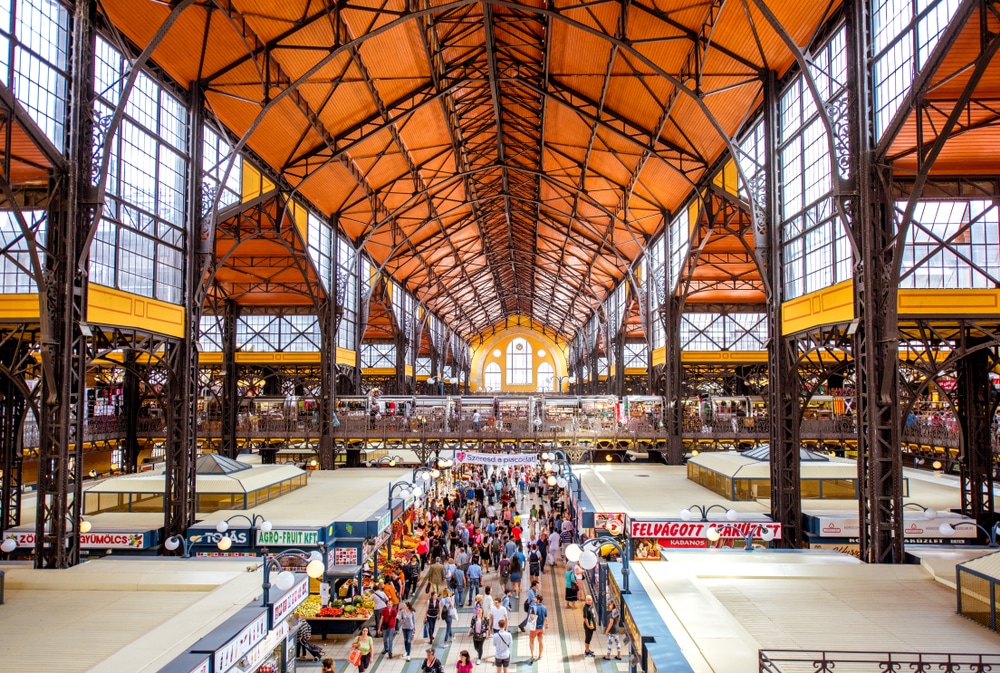 Source: RossHelen / shutterstock
Source: RossHelen / shutterstockOften praised as one of Europe’s most beautiful indoor markets, the Great Market Hall in Ferencváros is a majestic Art Nouveau edifice that opened for business in 1897.
The facades’ towers recall Hungary’s Gothic architecture, with their patterned brickwork and glazed majolica roof tiles, and draw you into a cathedral-like space under a vast steel framework.
This is still a daily amenity for Budapestians, but with the influx of tourists to the capital over the last three decades, is also somewhere for visitors to get their hands on Hungarian specialities.
The ground floor is devoted to produce, and is just the place to pick up paprika, Hungarian cured or smoked sausage like kolbász and szalámi, Barack (apricot brandy) the chocolate/curd snack Túró Rudi and sweet Tokaji wine.
The basement, more for everyday shopping, has fishmongers, butchers and vegetable stalls, while the first floor has a mix of eateries and stalls for handmade traditional souvenirs.
4. St Stephen’s Basilica
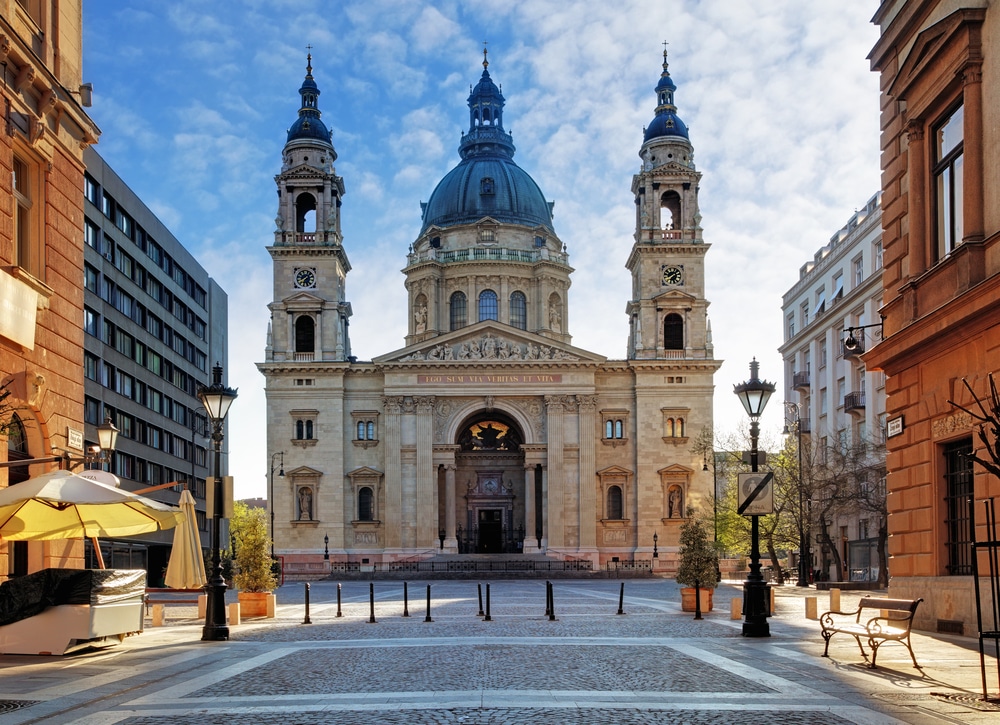 Source: TTstudio / shutterstock
Source: TTstudio / shutterstockHungary’s third-largest building is a church of huge national importance, built throughout the second half of the 19th century.
The neo-Renaissance St Stephen’s Basilica is dedicated to Hungary’s founding king (975-1038), whose mummified right hand, the Holy Right (Szent Jobb), is kept in the reliquary.
As well as its awesome proportions and abundance of mosaics and statuary by important Hungarian artists like Székely Bertalan and Than Mór, St Stephen’s Basilica also has excellent acoustics and high reputation for its music.
There are performances by distinguished organists throughout the summer, and on Sundays you can come to hear the Basilica choir.
The dome, peaking at almost 100 metres, has an observation platform near the top. This can be reached by elevators or 364 steps for an all-encompassing 360° view of Budapest.
Website: https://www.bazilika.biz/
5. Matthias Church
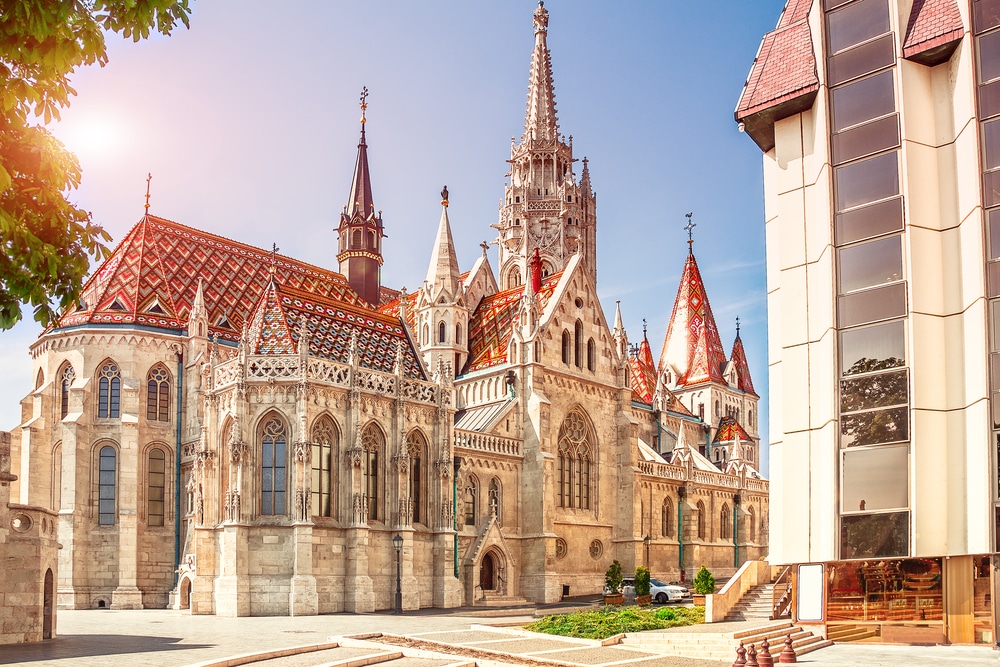 Source: karnavalfoto / shutterstock
Source: karnavalfoto / shutterstockRecognised by its delicately carved tower, this church has stood in Buda’s Castle District in some form for more than 1,000 years, having been founded by St Stephen in 1015.
Needless to say, Matthias Church has witnessed a lot of important events, not least the coronation of Franz Joseph I and Elisabeth of Austria (1867), and Charles IV of Hungary and Zita of Bourbon-Parma (1916).
Under the Ottomans in the 15th century the Gothic building was turned into a mosque, and it wasn’t until the late-19th century that the church was restored to its 13th-century plan, with some neo-Gothic embellishments like the diamond pattern roof tiles.
Some of the many details to take in are the 15th-century southwest portal, with a relief of Mary falling asleep and the sumptuously decorated Loretto Chapel, also Medieval and housing an image of Mary from the 17th century.
Look for the tombs of the 12th-century Béla III of Hungary and Agnes of Antioch, and the extraordinary sandstone pulpit, which was neo-Romanesque carvings depicting the four Evangelists and the four Doctors of the Church.
6. Széchenyi Thermal Bath
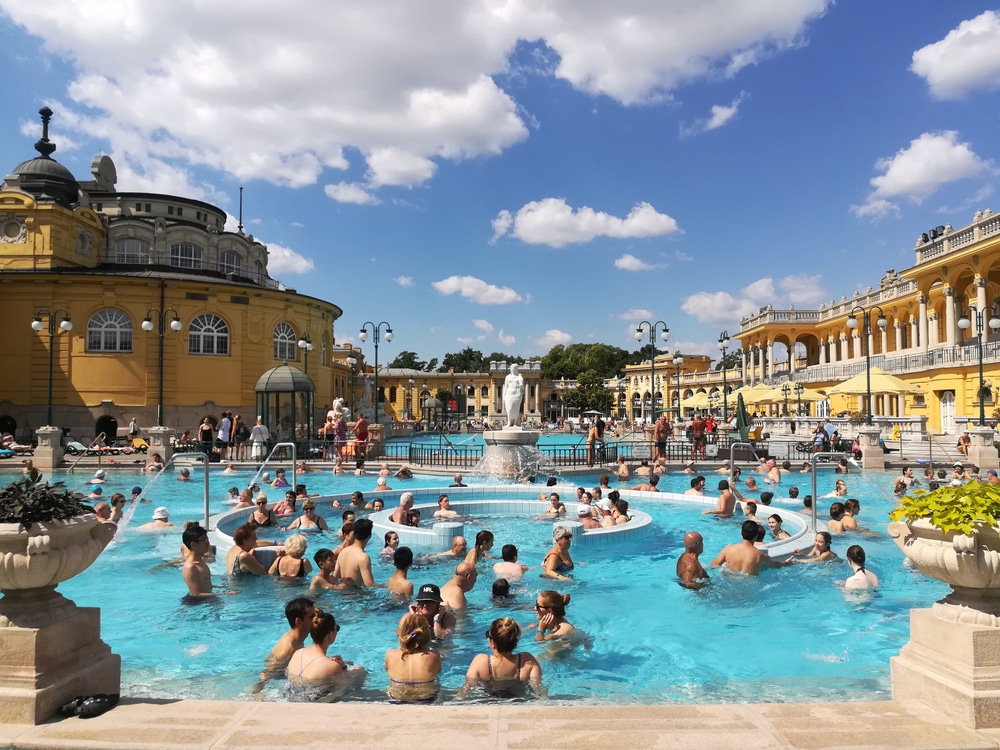 Source: watermelontart / shutterstock
Source: watermelontart / shutterstockMore than 100 thermal springs bubble to the surface in Hungary’s capital. These, combined with a bathing culture that came to the fore in the Ottoman period, put thermal baths among the things you have to do in Budapest.
Part of a flurry of grand buildings erected at City Park at the turn of the 20th century, the neo-Baroque Széchenyi Thermal Bath is the largest spa complex in Budapest, and claimed to be the largest in Europe.
The supply comes from two wells, one drilled in the 1870s and the other in 1936. The latter, bursting from a depth of 1,240 metres, is the warmest spring in Europe at 77°C.
The refined bathing complex, overflowing with sculpture and wrapped in regal arcades and balustrades, has three outdoor and 15 indoor pools and came through a refurbishment that was completed just over a decade ago.
Be sure to bring your own towel and flip-flops, as well as a swimming cap, which is required for some of the indoor pools.
You can cool off with a beer, soft drink or ice cream, and even have a game of chess as you bathe, although these boards are often monopolised by competitive regulars.
Website: http://www.szechenyibath.hu/
7. Fisherman’s Bastion
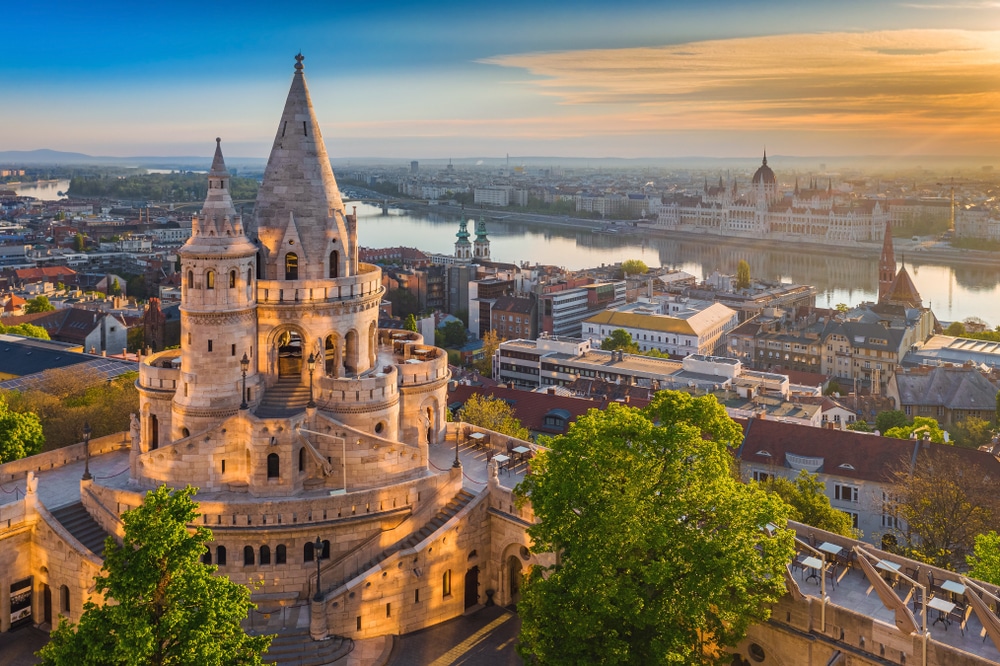 Source: ZGPhotography / shutterstock
Source: ZGPhotography / shutterstockPurely ornamental, this elaborate set of terraces, arcades and towers has run parallel to the Danube at Buda Castle, and has a Romanesque Revival design.
The Fisherman’s Bastion, unveiled in 1902, is composed of three parts, adding up to 140 metres in length and is cherished for its romantic architecture and the dreamy vistas of the river, the Parliament Building, Margaret Island and Pest on the left bank.
This monument is also endowed with no little symbolism, as its seven circular towers each represent one of the seven semi-nomadic Magyar tribes that settled the Carpathian basin in the 9th century.
There are also imposing statues to take in on your tour, the most arresting of which is the Stephen I, the first King of Hungary in the southern bastion court, on horseback and bearing the Patriarchal Cross.
8. Dohány Street Synagogue
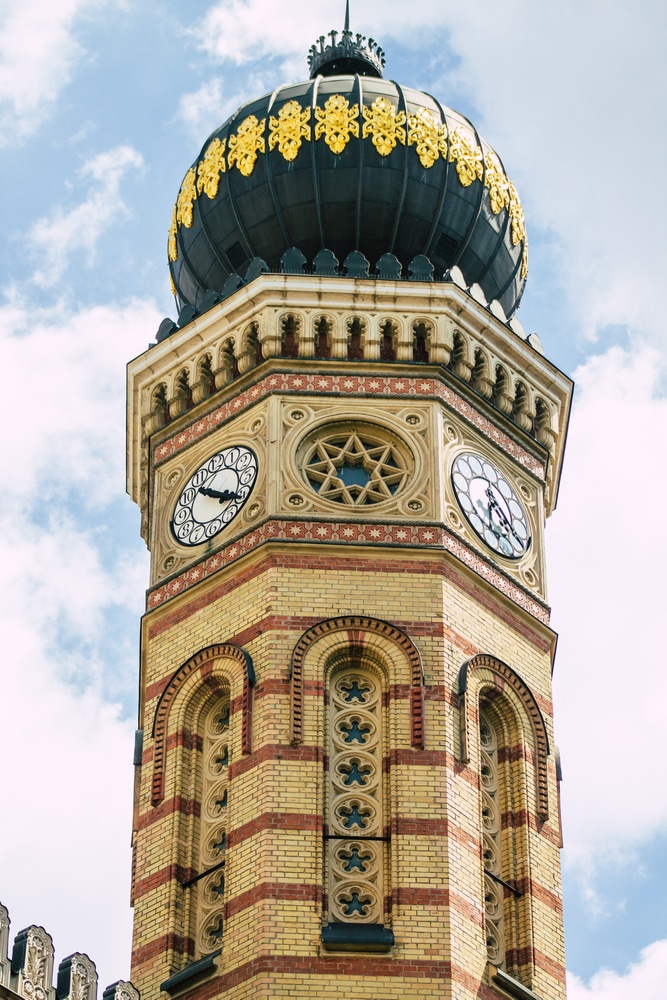 Source: Jose HERNANDEZ Camera 51 / shutterstock
Source: Jose HERNANDEZ Camera 51 / shutterstockBudapest has the largest synagogue in Europe, which is also the second-largest in the world.
Consecrated in 1859, the Moorish Revival Dohány Street Synagogue has a capacity for 3,000 worshippers and was built for Hungary’s liberal Neolog community.
Approaching the building along Dohány Street, the first thing you’ll see is the pair of onion domes atop twin octagonal towers, 43 metres tall, and then the large rose window with a Star of David motif.
A lot of the interior, gleaming with gold leaf, was decorated by the prominent Romantic artist Frigyes Feszl, who designed the torah ark and the beautiful ceiling frescoes.
The synagogue is part of a large complex that includes the Hungarian Jewish Museum and Archives, the Heroes’ Temple remembering the Hungarian Jews who fought and died in WWI and a cemetery for the more than 2,000 Jews who died in Budapest’s Jewish Ghetto in 1944-45.
Also here is the Raoul Wallenberg Holocaust Memorial Park, with a memorial for the 400,000 Hungarian Jews murdered by the Nazis.
9. Buda Castle District
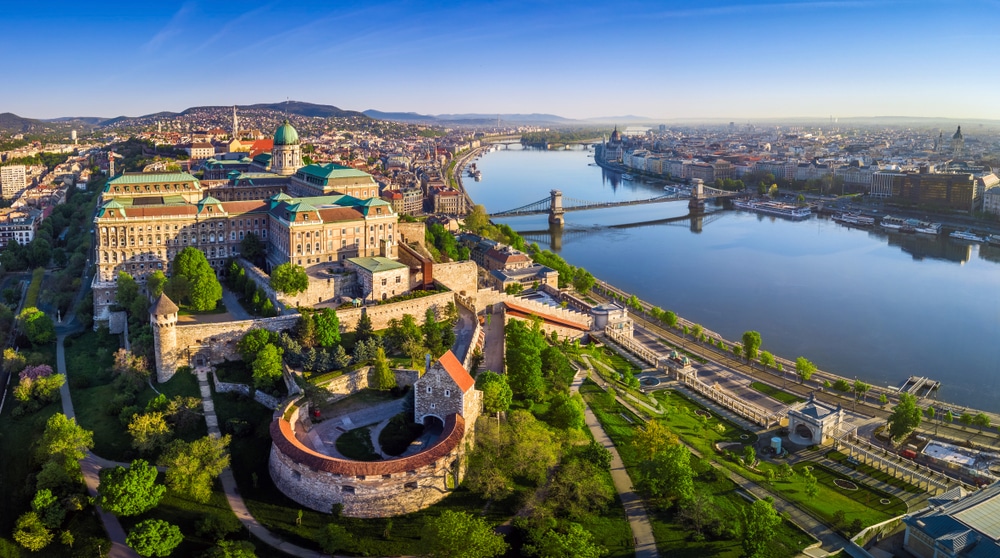 Source: ZGPhotography / shutterstock
Source: ZGPhotography / shutterstockA long line of Hungarian kings resided at this hilltop site on the right bank of the Danube, first developed under Béla IV of Hungary in the middle of the 13th century.
You can scale the slope from near the Széchenyi Chain Bridge via the Castle Hill Funicular, which opened as long ago as 1870.
As it appears today the immense domed royal palace at the south end of the hill is Baroque, from the time of Maria Theresa in the middle of the 18th century after the Medieval palace was destroyed in the siege that ended the Ottoman era in 1686.
This now contains the Budapest History Museum, the National Széchényi Library and, for the time being, the Hungarian National Gallery.
Several other sights in the Buda Castle District also appear on this list, like the Matthias Church and the Fisherman’s Bastion.
10. Heroes’ Square
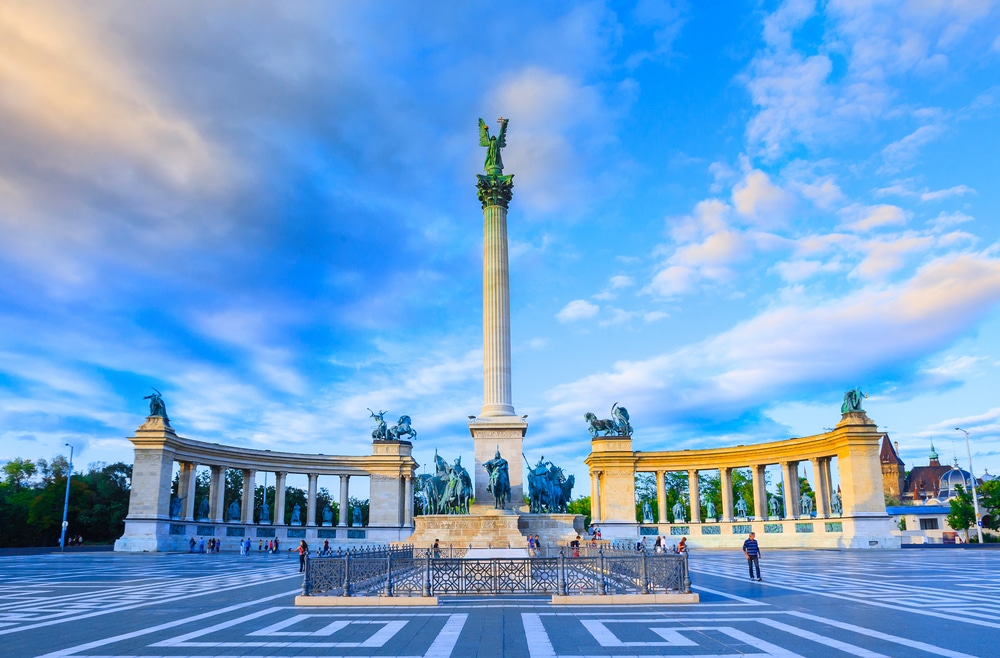 Source: Sodel Vladyslav / shutterstock
Source: Sodel Vladyslav / shutterstockThe arterial Andrássy út ends in grand style at this plaza belonging to the same UNESCO site as Buda Castle and the Danube in Budapest.
Heroes’ Square is flanked by solemn porticoes of the Palace of Art and the Museum of Fine Arts, and its centrepiece is the Millennium Memorial.
This formidable sculptural ensemble was raised to mark the 1,000th anniversary Hungarian conquest of the Carpathian Basin (1896), and the finishing touches were made ten years later.
Greeting you here on a sweeping plaza is a pair of colonnades, each with seven statues of celebrated kings, princes, military commanders and politicians from Hungarian history.
Right behind this stands a large Corinthian column capped with a statue of the Archangel Gabriel, wielding the Holy Crown of St Stephen in his right hand and the Patriarchal Cross in his left.
11. Gellért Hill
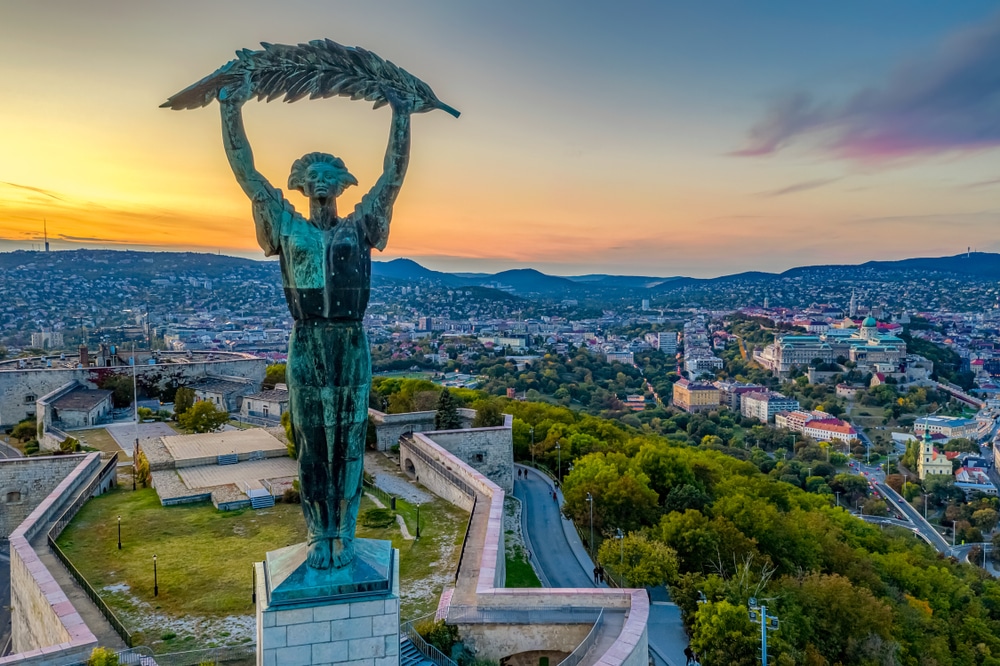 Source: Geza Kurka Photos / shutterstock
Source: Geza Kurka Photos / shutterstockPartially defended by cliffs, this dolomite hill rises 139 metres over the right bank of the Danube (235m above sea level), and is one of the defining elements of the Budapest skyline.
The hill is densely wooded and belongs to the Danube-Ipoly National Park dominating an affluent part of the city, home to embassies and the historic Rudas Baths.
From the river your eye will be drawn to the Liberty Statue erected at the summit in 1947 to commemorate the Soviet liberation of the city from the Nazis.
Also hard to miss is the monument for the 11th-century Bishop and saint, Gerard of Csanád, for whom the hill is named.
This was raised in 1904 at the place where he was believed to have been thrown over the cliff in the midst of a pagan uprising in 1046.
The scenic plateau at the top of Gellért Hill is taken up by a 19th-century fortress, which we’ll talk about in more detail later.
12. Museum of Fine Arts
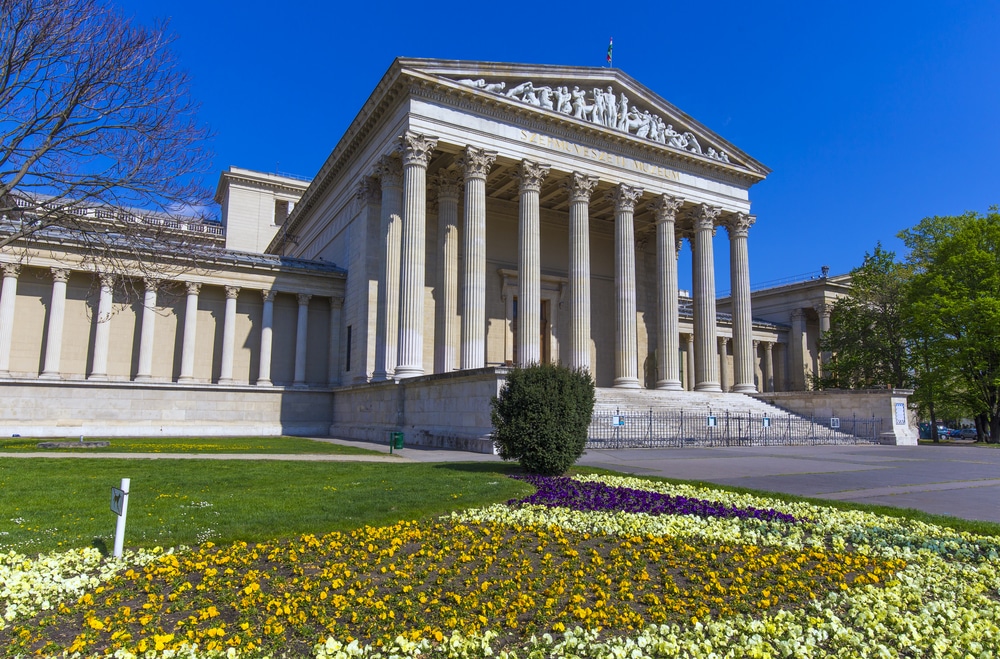 Source: posztos / shutterstock
Source: posztos / shutterstockFacing off against Heroes’ Square, is the striking Corinthian portico of the Museum of Fine Arts, which has exceptionally rich holdings.
The collection of Ancient Egyptian Art for instance is the second-largest in Central Europe, and rich with painted sarcophagi.
There are also extensive collections for Greek and Roman art, Old Masters paintings, sculpture, graphic art and modern art.
You’ll be treated to works by Albrecht Dürer, Lucas Cranach the Elder, Rubens, Giorgione, Goya, Tintoretto, Pieter Brueghel the Elder, van Dyck, Poussin, El Greco and Velázquez.
From the 19th-century you’ve got Impressionism, by Monet, Renoir, Manet and Pissarro, as well as sculpture by Auguste Rodin.
A couple of picks from the impressive array of Classical Antiquities are the Corinthian Greek bronze Grimani Jug, from the 5th century BCE and the Greek marble Statue of a Girl (The Budapest Dancer) from the 3rd century BCE.
Website: https://www.mfab.hu/
13. Margaret Island
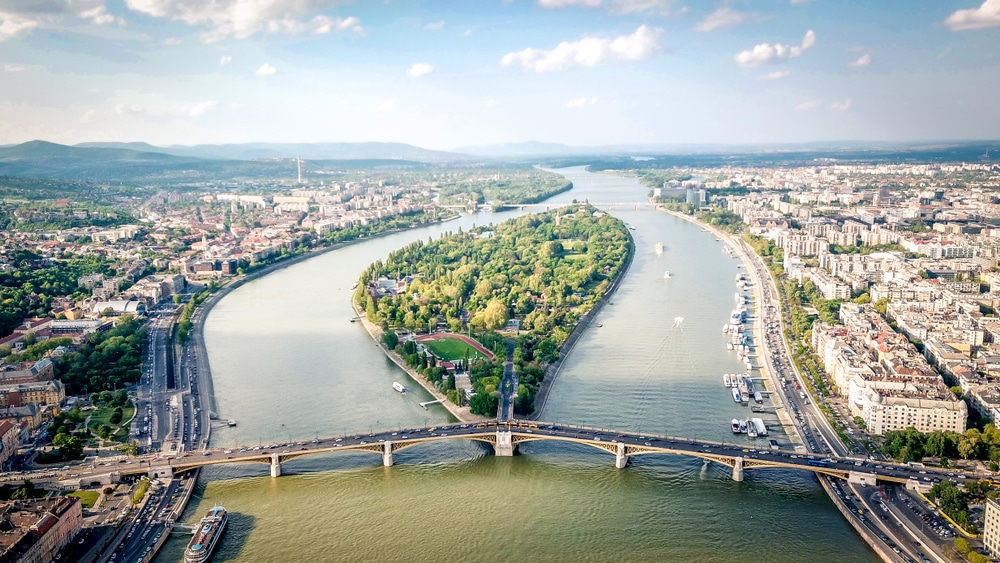 Source: Alexey Oblov / shutterstock
Source: Alexey Oblov / shutterstockSteeped in history going back to before the Middle Ages, Margaret Island is a 2.5km-long spit in the Danube, covered with greenery.
It lies between the Árpád Bridge to the north and the Margaret Bridge to the south, both of which connect to the island.
You can come for a gentle riverside walk on tree-lined paths, and to check out some of the monuments.
These include a fine Art Nouveau-style water tower from 1911, now used as a lookout tower, as well as the Music Fountain, putting on light and musical performances in summer.
Margaret Island is named for a 13th-century princess and saint, daughter of King Béla IV, who spent almost all of her life at the Dominican convent here.
You can track down the ruins of this monastery and its church, as well as a Franciscan and a Premonstratensian church from the 12 century.
14. Danube Cruise
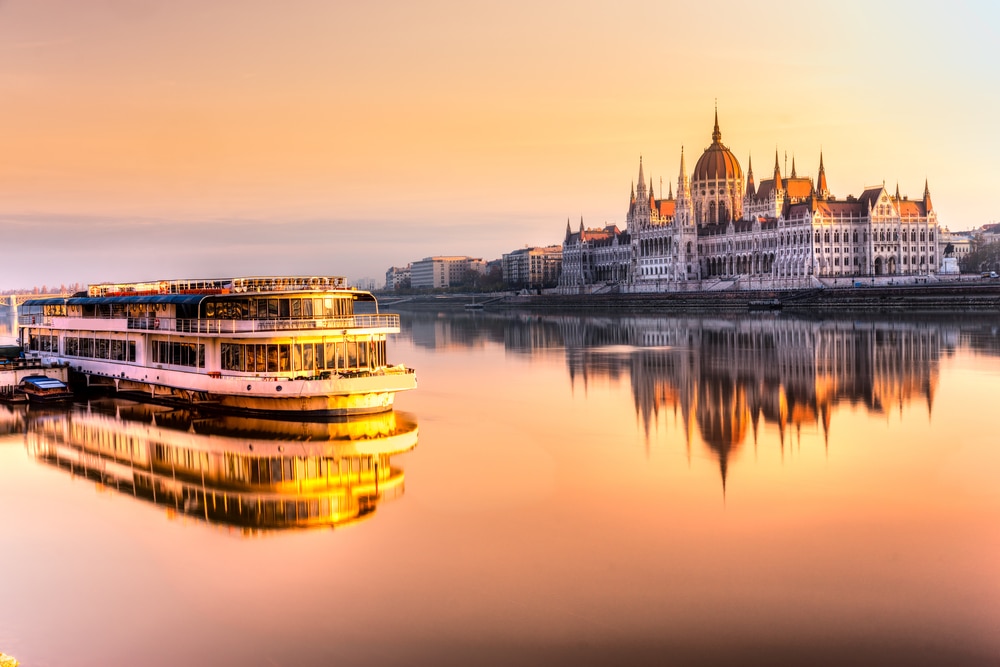 Source: Luciano Mortula - LGM / shutterstock
Source: Luciano Mortula - LGM / shutterstockAn inordinate amount of Budapest’s splendour is visible from the Danube, the banks of which are a UNESCO World Heritage Site.
Perched over the water are the Hungarian Parliament Building, Buda Castle, the Fisherman’s Bastion, the Liberty Statue atop Gellért Hill, not to mention the Chain Bridge.
There are a few ways to see the city from the water, the most economical of which is to catch one of the BKK public boat services (D2, D11, D12 & D14), and these are valid with a travelcard.
For a little more luxury, Silverline, Hungaria Koncert, Portum Lines and Legenda are a few of the cruise operators in Budapest, offering anything from brief sightseeing trips to dinner cruises.
15. Shoes on the Danube Bank
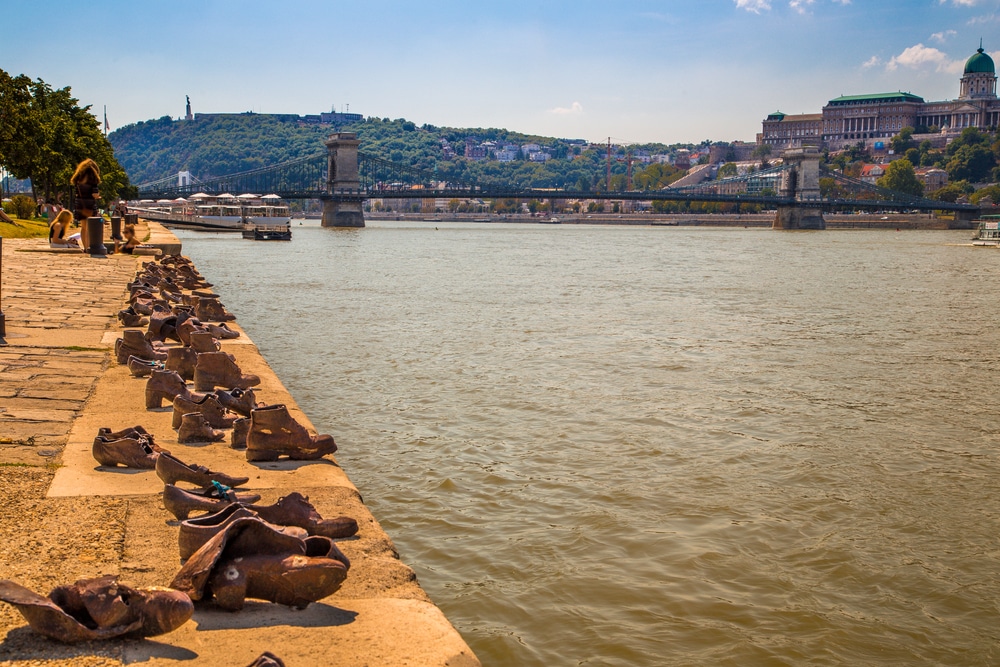 Source: GoneWithTheWind / shutterstock
Source: GoneWithTheWind / shutterstockA bleak chapter in Budapest’s 20th century history played out by the Danube in December 1944 to January 1945.
Here, Fascist militiamen from the pro-Nazi Arrow Cross Party murdered thousands of people, a large proportion of whom were Jews, letting their bodies be taken by the river and leaving their shoes on the bank.
The understated but powerful memorial, Shoes on the Danube Bank is on the left bank close to the Ministry of Justice building.
With 60 pairs of iron shoes by the water, the memorial was created in 2005 by sculptor Gyula Pauer and the concept was thought up by film director Can Togay.
16. Hungarian National Gallery
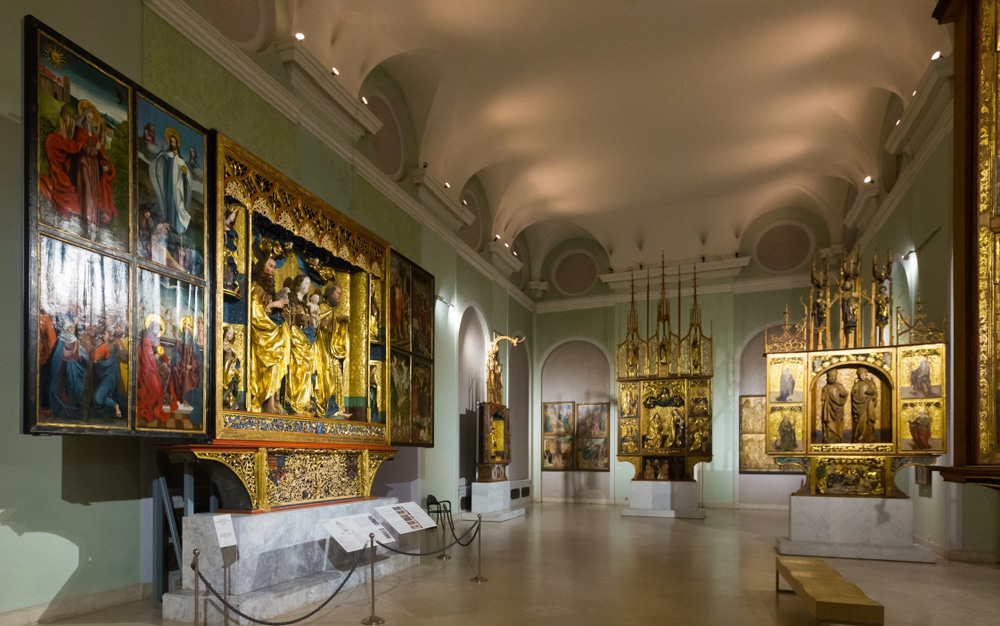 Source: Iakov Filimonov / shutterstock
Source: Iakov Filimonov / shutterstockIf you want to get acquainted with Hungarian art there’s no better starting point than this museum at Buda Castle.
What you’ll get is a complete survey of fine art in Hungary up to WWII, but with special attention to the movements of the 19th and 20th centuries.
This will take you from landscape painting by the likes of Károly Markó the Elder to Biedermeier-style Realists like Henrik Weber, Impressionism by Károly Ferenczy and works from important artists’ colonies at Nagybánya, Szolnok and Gödöllő.
The sculpture collection is extremely rich, and represented by Béni Ferenczy, Gyula Donáth and Miklós Borsos, among others.
Also on display are some much older works, including fabulous Medieval altarpieces like the 15th-century High Altar of Kisszeben, which went on show in 2020 for the first time since the Second World War.
At the time of writing, the gallery was due to move from the castle to the Budapest Museum Quarter on Andrássy út.
Website: https://en.mng.hu/
17. Rudas Baths
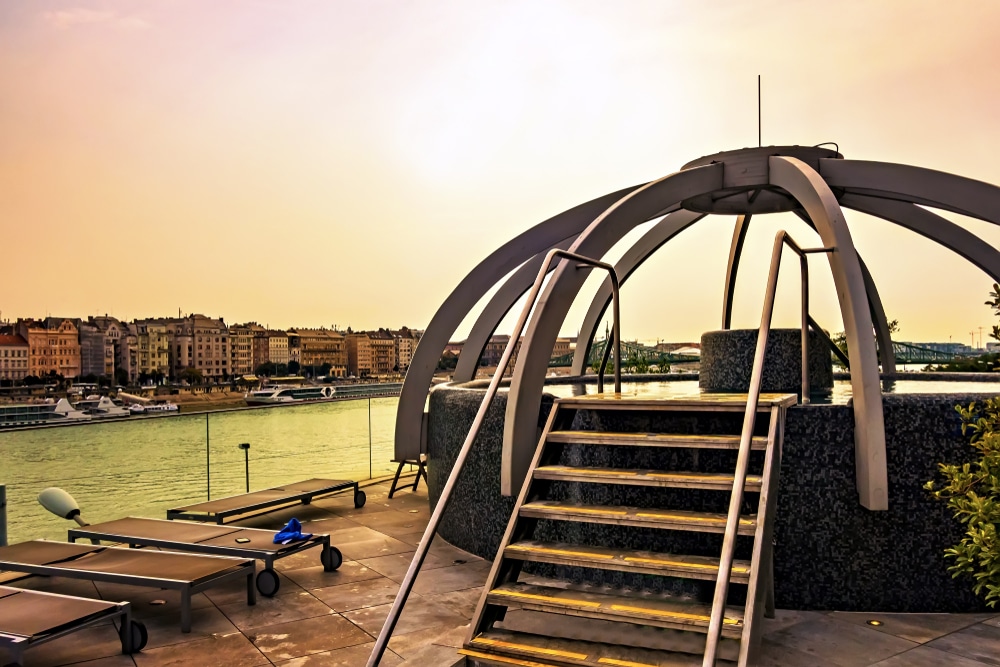 Source: VLADYSLAV DANILIN / shutterstock
Source: VLADYSLAV DANILIN / shutterstockThis 16th-century bath complex is at the foot of Gellért Hill on the Buda bank of the Danube.
It’s fascinating to think that the Ottoman governor of the then province of Budin Eyalet bathed at this very place in the 1560s and 1570s.
The main holdover from that period is the octagonal pool, sitting beneath a circular dome ten metres in diameter and ringed by a pointed arcade.
The Rudas Baths are frequented for the supposed benefits of the spring water, especially for joint complaints, and were expanded at the end of the 19th century.
There are now six therapy pools and a swimming pool, with temperatures varying between 10 and 42°C. You can also visit the drinking hall, fed by the Hungária, Attila and Juventus springs, if you want to “take the waters”.
The baths are open to women only on Tuesday, men only on all the other weekdays, and both sexes on weekends. The swimming pool meanwhile is open to all, seven days a week.
Website: http://en.rudasfurdo.hu/
18. Hospital in the Rock
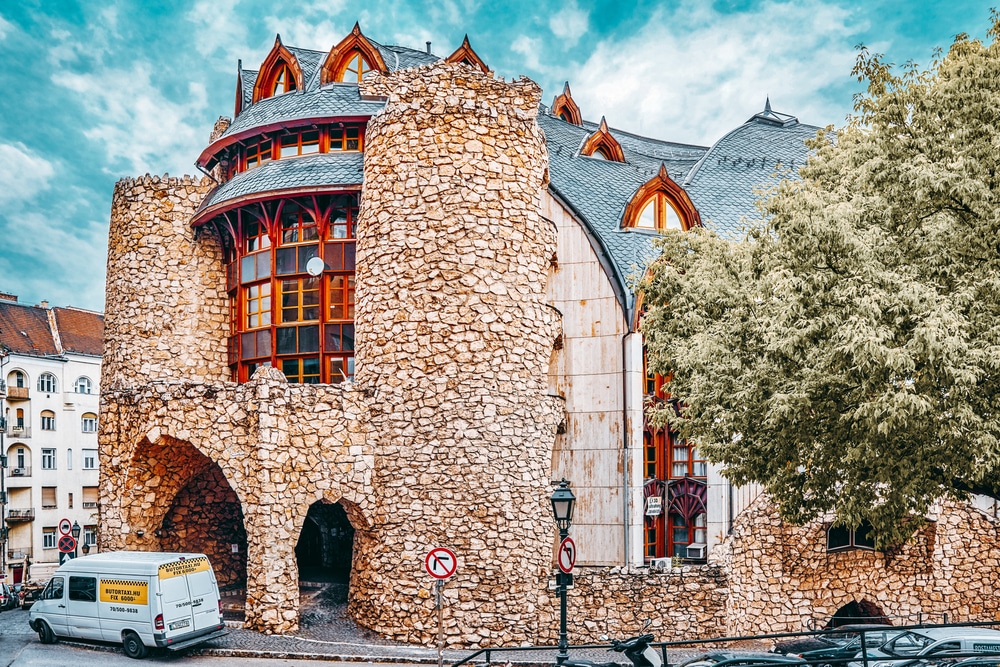 Source: V_E / shutterstock
Source: V_E / shutterstockIn the build-up to the Second World War the natural cave system underneath the Buda Castle District was repurposed as a subterranean bunker and hospital.
The latter, made up of three wards and an operating theatre, offered a vital service during the 1944-45 Siege of Budapest, simultaneously treating injured civilians and soldiers.
After the war the hospital played a role in producing vaccines for typhus, and then experienced a flurry of activity in the 1956 Revolution. Immediately afterwards, these tunnels became a nuclear bunker, shrouded in secrecy.
Although it was never officially decommissioned, the system was turned into a museum in 2007.
At the Hospital in the Rock there’s a host of original objects from the 1940s and 50s, like gas masks, stretchers, bunk-beds, cabinets, containers and surgical equipment, accompanied by more than forty waxworks for a glimpse of life in Budapest in times of crisis.
19. Hungarian State Opera House
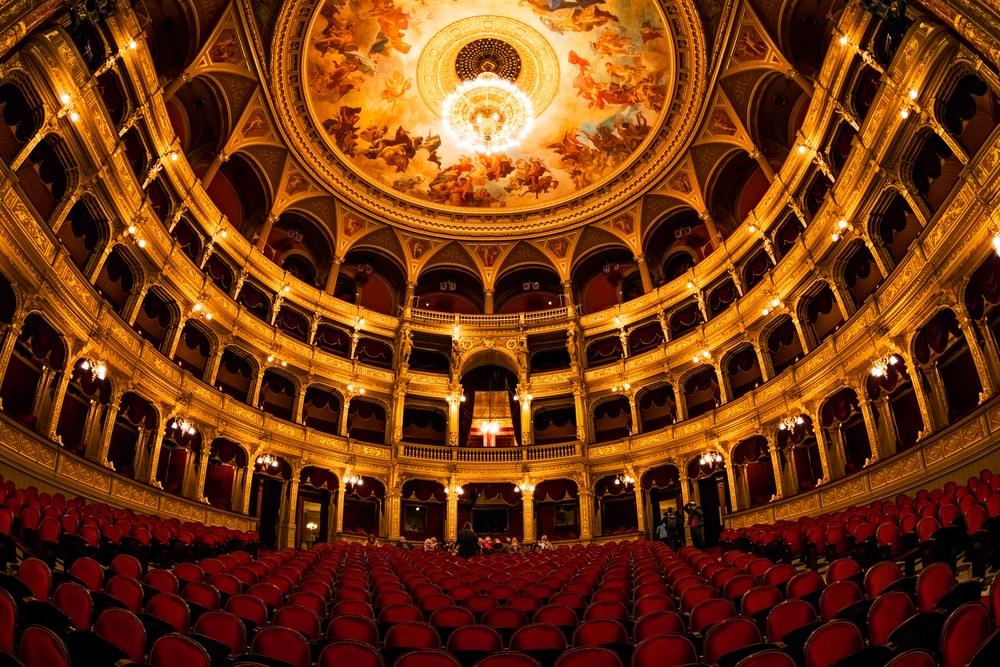 Source: posztos / shutterstock
Source: posztos / shutterstockThis handsome Eclectic opera house opened in 1884 and is regarded as the highpoint of architect Miklós Ybl’s career.
Just two of the many important cultural figures associated with the Hungarian State Opera are Gustav Mahler, director in the late-19th century, and Otto Klemperer, who was director immediately after the Second World War.
Even if you’re not an opera fan, the building demands a visit, and there are daily multilingual tours at 15:00 and 16:00.
The venue’s ornamentation is exquisite, both inside and out, and leading Hungarian painters like Károly Lotz Mór Than and Bertalan Székely contributed to the decor.
On Andrássy út you can take a moment to savour the main facade, with its pair of sphinxes in Carrara marble, and limestone statues of Liszt and Ferenc Erkel.
Heading in you’ll see the marble-rich foyer, Grand Staircase, Royal Staircase, the various parlours and of course the auditorium.
This abounds with gilded sculpture below a huge chandelier and a Baroque-style fresco, 45 metres in circumference, depicting a scene from Mount Olympus.
Website: https://www.opera.hu/
20. Vajdahunyad Castle
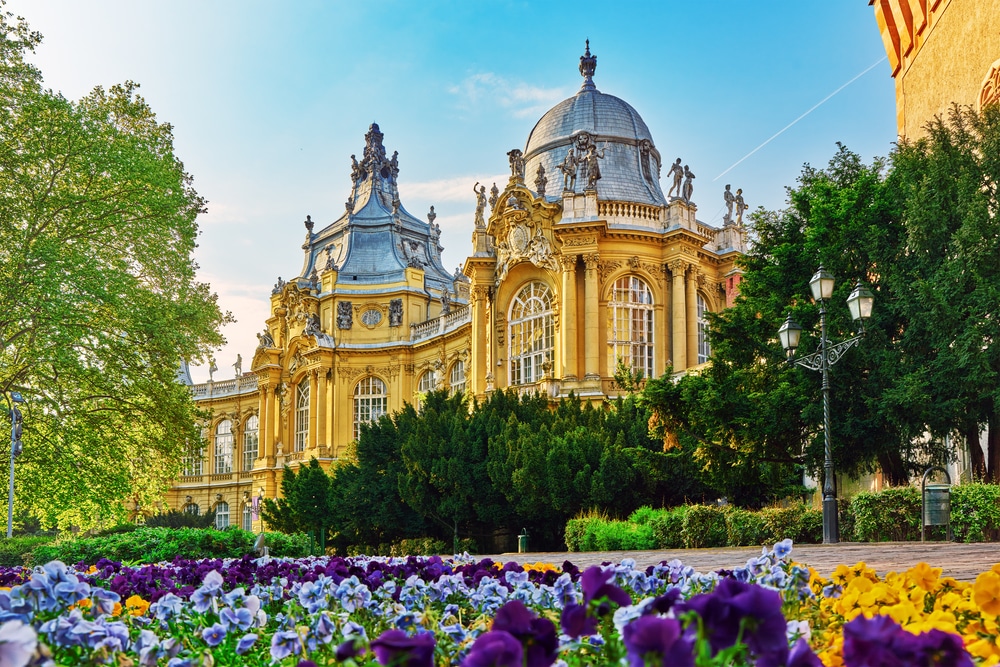 Source: V_E / shutterstock
Source: V_E / shutterstockCompleted in 1896, this fantastical lakeside castle in City Park was part of the Millennial Exhibition, marking 1,000 years since the Hungarian Conquest of the Carpathian Basin in 895.
Architect Ignác Alpár was commissioned to create a structure incorporating replicas of famous landmarks scattered across what was then the Kingdom of Hungary.
So what you see at Vajdahunyad Castle is a showcase for the history of the Magyars, in a melange of architectural styles and eras, from Romanesque to Gothic, Renaissance Baroque, all in one unifying building.
These include faithful renditions of the Abbey Church of St George in Ják, the Sighișoara Clock Tower, the Katalin Gate in Brașov and Corvin Castle in Hunedoara.
The original, composed of wood and cardboard, was only meant to be temporary and in the 1900s was replaced with the brick and stone castle standing today.
There’s a huge Christmas market in the castle grounds in December, while the lake beside the castle becomes a skating rink in winter. If you have time, the agricultural museum inside the castle warrants a quick peek.
21. Memento Park
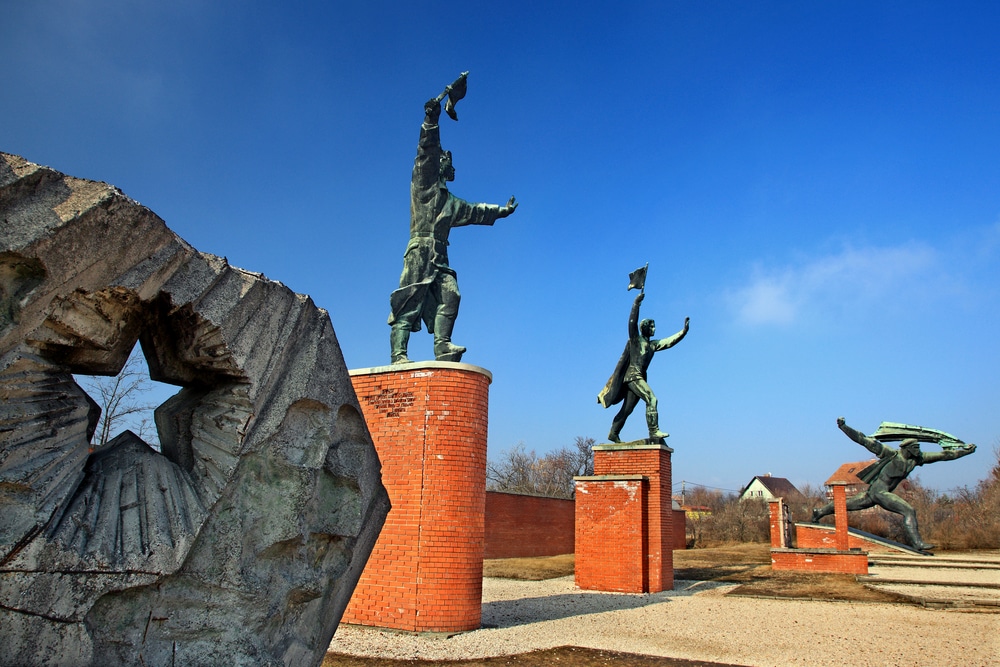 Source: Heracles Kritikos / shutterstock
Source: Heracles Kritikos / shutterstockAfter the fall of Hungary’s Communist regime in 1989 its many monuments were removed from public view.
Eventually these many works of Socialist Realism found a permanent home at this open-air museum, which opened in the 22nd District in 1993.
Memento Park is a useful snapshot of Budapest from 1945-1989, displaying a total of 42 statues, some of which are on a massive scale.
Among them are depictions of Marx, Engels, Lenin, Hungarian Communist activist Béla Kun and an idealised Liberation Army Soldier, as well as allegorical pieces representing “Liberation”, “Hungarian-Soviet Friendship”.
There’s an indoor exhibition taking a close look at the brutally quelled Hungarian Revolution of 1956 and the collapse of Communism in 1989, while a popular photo opportunity is the museum’s Trabant car, famously manufactured in the GDR.
Website: https://www.mementopark.hu/
22. Szimpla Kert
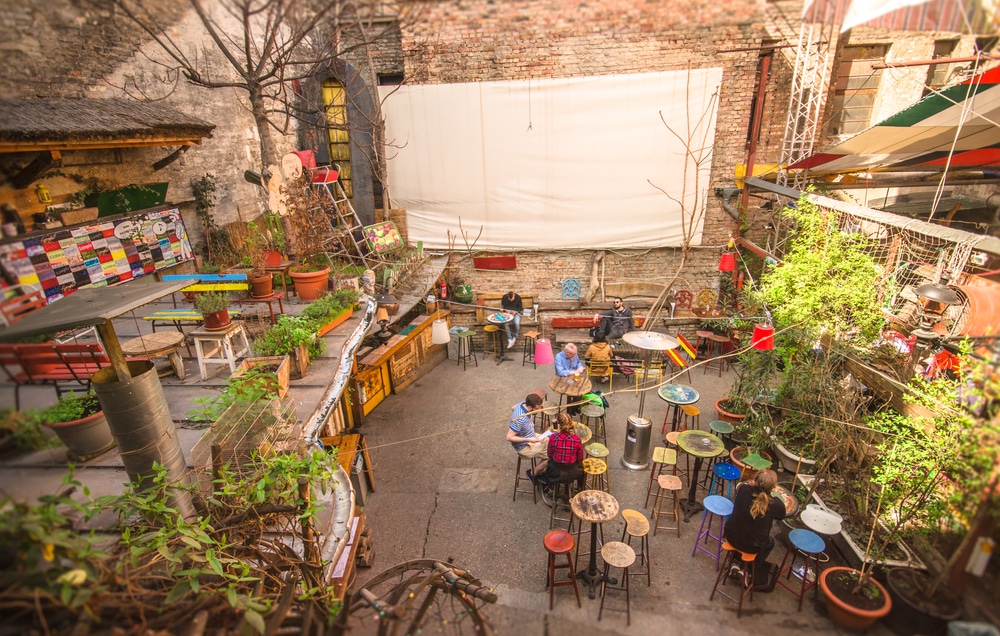 Source: Alicia G. Monedero / shutterstock
Source: Alicia G. Monedero / shutterstockA concept that has taken off in Hungary, Szimpl Kert in the Jewish Quarter is the original romkocsma, or “ruin pub”, an alternative amenity fuelled by creativity and sustainable thinking.
To call this spot, set up in a rundown former factory in 2002, just a pub is to do it a big disservice.
As well as serving food and drink, Szimpla Kert is an outdoor cinema and an alternative cultural space for concerts, theatre performances and more.
There’s a farmers’ market every Sunday morning, raising money for non-profits,while the building is also a cycling centre, hiring out bikes and selling accessories.
Website: http://szimpla.hu/
23. Flippermúzeum
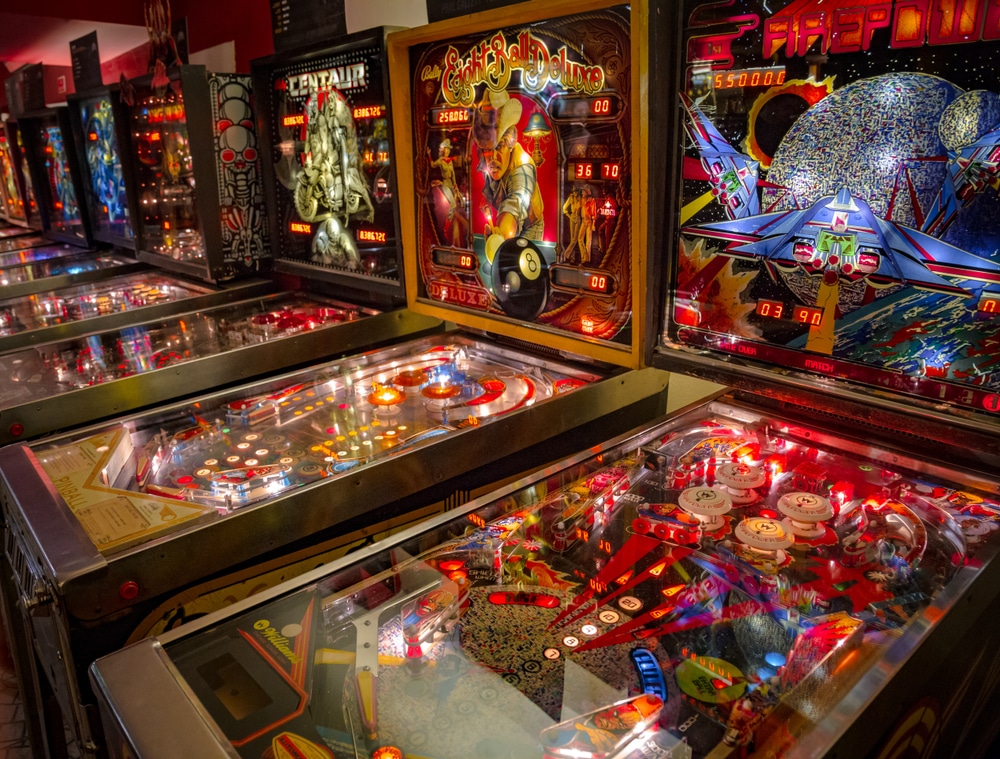 Source: Gilmanshin / shutterstock
Source: Gilmanshin / shutterstockDubbed the leading pinball museum in Europe, Flippermúzeum charts the history of pinball with some 130 machines presented over 400 square metres of vaulted tunnels.
The collection takes you from the 19th-century forerunners of modern pinball, right up to the latest 21st-century machines, but is rooted in a nostalgia for the arcades of the 1980s and 90s.
Best of all is that most of the exhibits are in working order and free to play, turning the Flippermúzeum into a working arcade of its own.
The pinball machines are accompanied by all kinds of other games and machines, from air hockey to Mortal Kombat to old-school ticket redemption machines.
Website: https://flippermuzeum.hu/
24. House of Terror
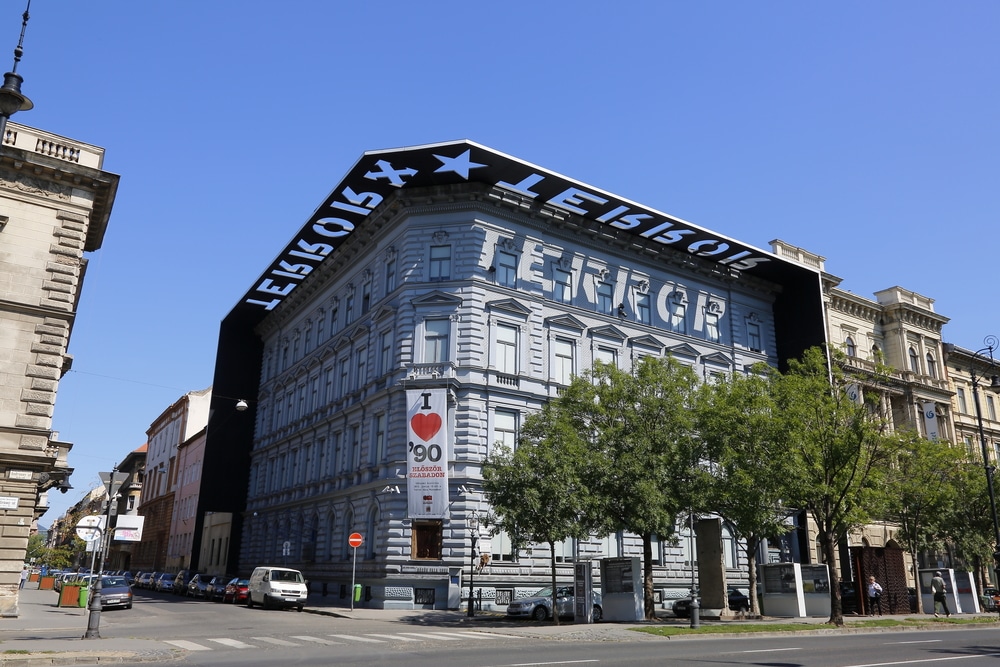 Source: HPL17 / shutterstock
Source: HPL17 / shutterstockThis building at Andrássy út 60 has a dark past, having been used by the far-right Arrow Cross Party in the Second World War, and then by the State Protection Authority (ÁVH) in the immediate post-war years.
It was turned into a museum in the early-2000s, recalling the grim years of the 1940s and 50s.
The permanent, multisensory exhibition is on four floors, starting at the top and working its way down through a chronology of the two regimes.
On your tour you’ll find out about the chaos that overtook Hungary under Nazi occupation, beginning in 1944, and from there you’ll learn about Arrow Cross Party death squads, post-war deportation, forced resettlement, Hungarian resistance to Communism and get to know some of the protagonists of the era like the ruthless ÁVH head Gábor Péter.
In the basement, where the Arrow Cross Party and ÁVH carried out acts of brutality on their captives, you can retrace the 1956 Revolution and its bloody response, and visit reconstructed versions of the cells that used to be here.
Website: https://www.terrorhaza.hu/
25. Citadella
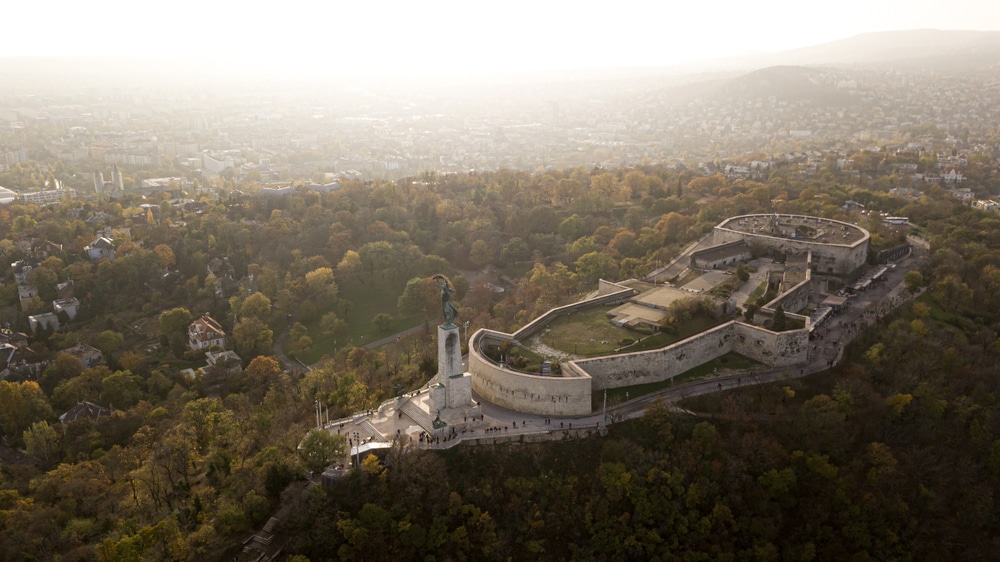 Source: Kastaprav / shutterstock
Source: Kastaprav / shutterstockAfter the Hungarian Revolution of 1848, the Austrian commander Julius Jacob von Haynau put plans in motion for this fortress atop Gellért Hill, 235 metres above sea level.
The Citadella was ready in 1851 and at 220 metres in length takes up almost the entire plateau.
Armed with 60 cannons, the fortress was built with Hungarian forced labour and retained a garrison even after the creation of Austria-Hungary in 1867.
In the 1960s the site was reworked for tourism and a scenic promenade was built around the base of the walls. The signposted, tree-shaded walking trail to the crest of the hill is easier than it looks.
And while the fortification, which used to house a small museum, awaits a new role, the main reason to make the climb is for that spellbinding panorama of Pest.
Try to time your walk for just before sunset so you can watch the city and bridges on the Danube lighting up.